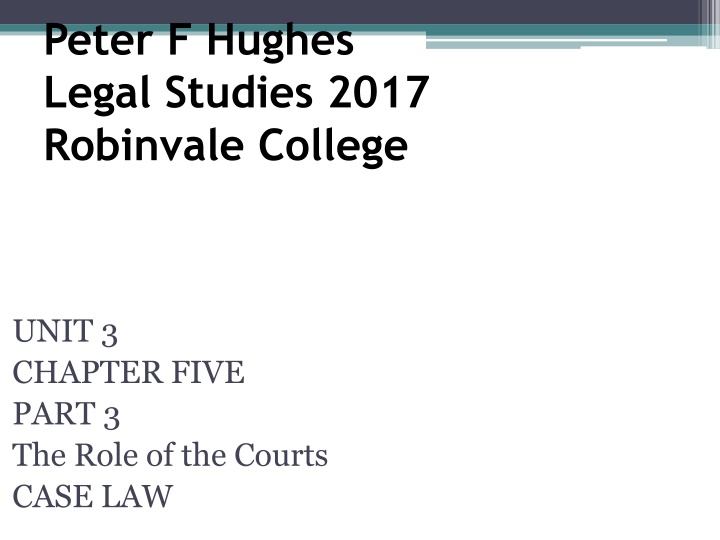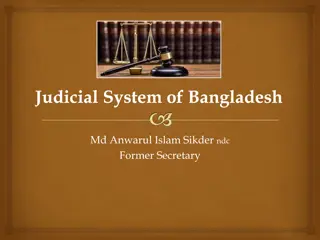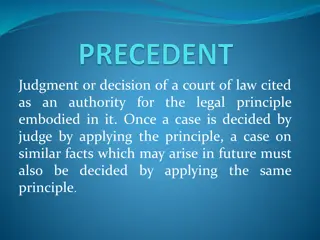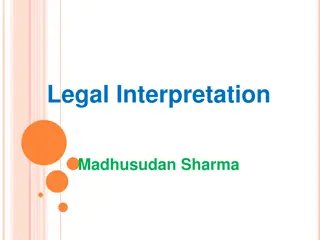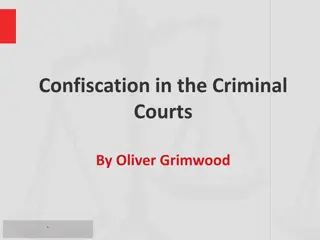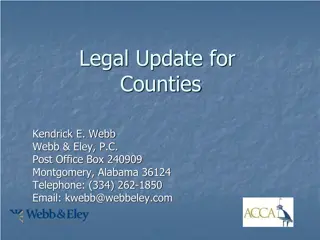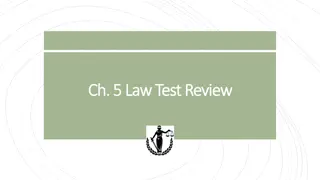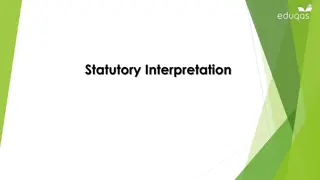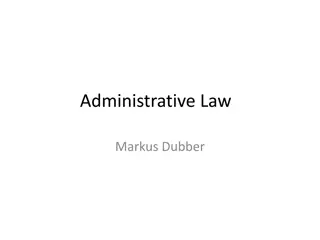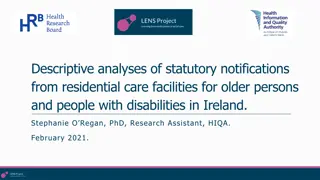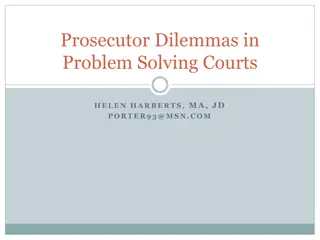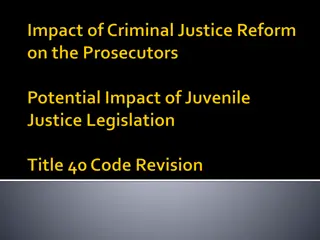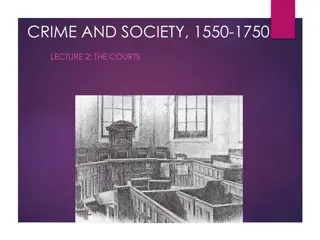Role of Courts in Legal Studies: Interpretation of Decisions and Statutory Laws
Courts play a crucial role in legal studies by interpreting past decisions, distinguishing precedents, and clarifying statutory laws. Through case law and statutory interpretation, judges shape and clarify legal principles for future application, influencing the development of legal systems.
Download Presentation

Please find below an Image/Link to download the presentation.
The content on the website is provided AS IS for your information and personal use only. It may not be sold, licensed, or shared on other websites without obtaining consent from the author.If you encounter any issues during the download, it is possible that the publisher has removed the file from their server.
You are allowed to download the files provided on this website for personal or commercial use, subject to the condition that they are used lawfully. All files are the property of their respective owners.
The content on the website is provided AS IS for your information and personal use only. It may not be sold, licensed, or shared on other websites without obtaining consent from the author.
E N D
Presentation Transcript
Peter F Hughes Legal Studies 2017 Robinvale College UNIT 3 CHAPTER FIVE PART 3 The Role of the Courts CASE LAW
Interpretation of Past Decisions Courts interpreting words from a case that has a precedent in it. Some courts are bound by previous decisions. Other courts may distinguish, overrule, disapprove or reverse a past decision.
Interpretation of Past Decisions Decisions may be broadened Decisions can be narrowed New cases often are confronted with this as the precedent is examined and applied. Sometimes we wait until the High Court of Aust. Can clarify that area of the law eg Wooten
Parliaments Intention the wording of an Act Deing v Tarola 1993 SC VR162 (The studded belt case) Court defines what is a controlled weapon
Interpretation of Past Decisions Judges in Courts of Appeal and the Supreme Court of Victoria will include the reason for their judgement at the end of the case. This is where the Ratio Decidendi is located. It is the part the majority of judges have chosen as their reason for the decision.
Statutory Interpretation Another avenue apart from precedent where judges can make law. State = Law = Act of Parliament. Interpretation of Parliament s acts gives them meaning. Judges are best positioned for this interpretation and comment through cases.
Statutory Interpretation Judge s reasoning following an interpretation of a statute in a case provides precedent. This new precedent becomes law alongside the statute. Judges are adding to existing law. Judges are clarifying what the law is.
Statutory Interpretation In a future case with similar facts that involves the same law, the new precedent becomes part of that law. HOW????? By lawyers looking at that case and making a decision if it is similar. The plaintiff s lawyer might make an opinion at this point.
Statutory Interpretation Judge s interpretation adds meaning to the statute. Their meaning or interpretation can be a guide as to how a future case may be heard. Judges use several methods in their interpretation of laws of Parliament.
How judges interpret acts. Words used in acts of Parliament may have a meaning long established in the law. When a new act is passed, it may contain those words with established meanings. Remember our dvd on laws being enacted. It showed the politician sending the draft to legal experts for final wording.
How judges interpret acts Intrinsic Materials Listed in the act itself Extrinsic materials Materials outside the act used in its interpretation.
Intrinsic materials The wording in the act itself. Preambles eg this is an act to allow development of wind generating plants in rural zones of Victoria. Schedules (eg depreciation, tax etc etc)
Extrinsic materials Parliamentary debates ( where the act was created and it might contain reasoning for the enactment) eg: To ensure wind farms are not located too close to residential areas and to minimize disruption to normal life. Reports from committees (you know this!!) Interpretation acts Legal dictionaries Legal journals and reports
How judges interpret acts Often literal meaning of words is used in the interpretation of an act. Acts themselves may have a definitions page located in them. Legal Dictionaries give literal meanings to words or convey various meanings relating to the law.
How judges interpret acts Literal v purposive approach Literal words taken at their meaning. Purposive purpose of the act, what it was meant to do.
How judges interpret acts Acts Interpretation Act 1901 (Cth) This act provides guidance for the courts in interpreting legislation. Looks at how we decide what parliaments intention was in enacting the legislations
